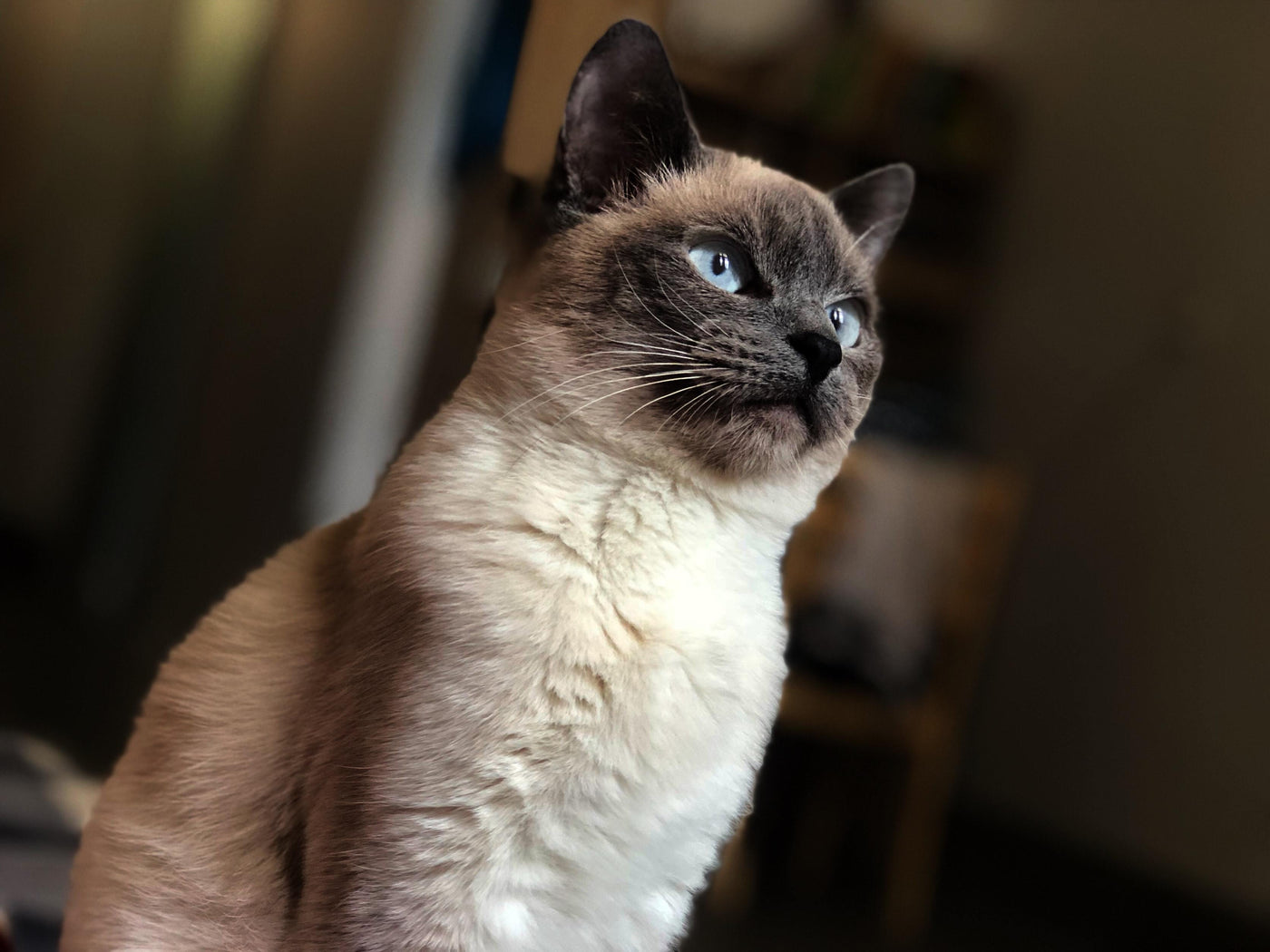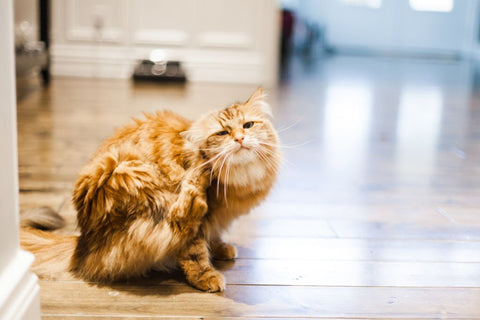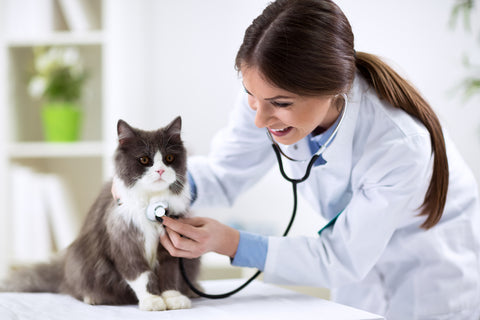
The Traditional Siamese cat is a history lesson wrapped in a furry bow. Known by many names, this cat was royally envied. The Siamese breed is one of the most well-known cat breeds in the world, but did you know there are two distinctly different categories within the breed? Let us introduce you to one of the sides of the Siamese coin, the Traditional "Applehead" Siamese.
A Royal Origin Story
Coming from Siam, which today is known as Thailand, this strain of Siamese cat comes with a plethora of names; The Old-Style, The Traditional, The Traditional Eastern, and The Classic Siamese. Though in recent years they have been deemed simply the ‘Thai Cat’ due to their Thai heritage. Today, this Traditional Siamese cat is nicknamed lovingly as the ‘Applehead,’ due to their head shape mimicking an apple.
The Traditional Siamese can be cited historically going back as far as 1350 AD-1768 AD. The Siamese breed is portrayed in an ancient text called “Tamra Maew” meaning, ‘The Cat-Book of Poems’, and is said to have come from the Ayutthaya Kingdom.
Domesticated by Siam royalty; The Traditional Siamese was known for their mystical background, believed to bestow wisdom and magical powers, earning them great respect and honor from all. Having such high regard, Traditional Siamese cats were presented as gifts from the royal family to friends, relatives, and visiting dignitaries. These cats were also known to deal with souls. When a royal family member was showing signs of death, a special Siamese cat would be selected to inherit the soul of the passing family member.

The Traditional Siamese is said to have first arrived in Europe in 1884 by way of Edward Blencowe Gould (a British Consul-General). The general had brought back a pair of ‘breeding cats’ from Bangkok and gifted them to his sister, Lilian Jane Gould.
Lilian’s two cats were named Pho and Mia and bred three Siamese kittens. Pho and Mia, along with their kittens were presented at London’s Palace Show the same year. Seeing these gorgeous felines, many went to Thailand and returned to England with a base breeding community of the entire Siamese breed. The first Traditional Siamese was introduced to America by way of a gift given to Lucy Hayes, the First Lady to the 19th president of the United States. In the 1950s, cat breeders began breeding the Modern Siamese, wanting a Siamese cat with a more stylized look.
Traditional Appearance
With a nickname like ‘Applehead,’ there must be a reason behind the peculiar name. And there is! Compared to the Modern Siamese, often referred to as the ‘Wedge Head,’ the Traditional Siamese has a round face very much resembling that of an apple. This apple-shaped face is considered to be the main distinguishing feature of the ‘original’ Siamese cat.
The Traditional Siamese have round, medium-sized bodies. They are of bulky stature and have tails that are shorter in comparison to most cat breeds.

The Traditional Siamese have large circular eyes that only come in various shades of blue, which the Siamese cat is known for. Their ears are around average size; however compared with their apple-shaped head, they appear to look smaller than most.
Like most of the Siamese breed, they have a short coat. Their bellies usually are a shade of white due to all Siamese cats being half albino. Their albinism also gives their eyes that recognizable blue color. Siamese cats are equipped with distinct markings known as ‘points’ which are restricted to the face, tail, and paws. When it comes to the Traditional Siamese, there are only four natural colors that the points can come in:
- Seal Point (Seal brown points with a cream coat)
- Blue Point (Grey and Blue points with a white coat)
- Chocolate Point (Chocolate colored points with an ivory coat)
- Lilac Point (Pink points, lilac paw pads, and nose with an off white coat)
The Siamese Personality
The Siamese is an overall smart and curious breed. Filled with charm and style, they are known for loving and interacting with people. They also enjoy the attention, and can quickly become demanding of it. They tend to be mischievous and can effortlessly entertain themselves while you are away. You may want to watch them around the kitchen or bathroom, for they are known for hiding in cabinets and turning on faucets. This is why many cat fanciers recommend getting them in pairs. This way, they can play and keep each other busy, for the Siamese have a tendency to have separation anxiety from their human.
They are indeed a playful and moderately energetic breed, but when they are finished with their fun, they retreat to their human’s lap. Cuddling and enjoying the company, they often end up sleeping in bed with their guardians.

While the Traditional Siamese and the Modern Siamese have many of the same personality traits, there is one that Siamese lovers like to point out. Everyone knows that the Siamese breed is one of the most vocal cats out there, but the Traditional Siamese is regarded as the quieter of the two. But don’t worry, if you love the Siamese ‘songs’ they will most certainly serenade you when they feel the mood calls for it.
Health & Care
The “Applehead” Siamese breed is regarded as a generally healthy breed. However, like their modern counterparts, they are prone to be born cross-eyed, which limits peripheral-vision and results in poor depth perception. But thankfully, breeders are actively breeding out the cross-eyed mutation.

Like all cats, having a healthy diet and adequate exercise is a must to protect them from obesity and other common health problems. Having games or toys that stimulate and spark their mind, such as puzzles, are best for this highly intelligent breed.
Grooming is an easy task as their coats are short and naturally soft to the touch. Only requiring a brush or comb through once or twice a week.
Traditional Siamese cat Facts
- The Traditional Siamese’ name in Thai is ‘Wichien Maat,’ which translates to ‘Diamond Gold.’
- Some say that the Classic/Old-Style Siamese and the Traditional Siamese are two different categories of the Siamese breed. However, most agree that they are one and the same.
- All Siamese kittens are born white and receive their color points as they grow.
- Traditional Siamese cats use to have kinks in their tails. This was said to be because a Siamese cat was tasked with guarding a Royal Chalice. The feline developed a permanent kink in its tail by wrapping its tail tightly around the goblet.
- Another story is that a princess used the tail of the Traditional Siamese as a hook to hang her jewelry, so it wouldn’t get stolen while she bathed.
The Original
The Traditional Siamese cat is a charming breed to behold. No matter who comes across this feline, they will surely be stopped in their tracks, thus justifying why the Siamese is one of the most famous cats in the world. The Traditional Siamese is an exceptional archetype for all Siamese and the breeds that stem from it.
To learn more about the Siamese breed click here!
Do you have a Traditional Siamese cat of your own? Share videos and photos with us at meow@basepaws.com!
Want to see if your cat shares DNA with the Traditional Siamese cat? Grab one of our Basepaws DNA Kits!
For more about breeds, please follow the tags below.



